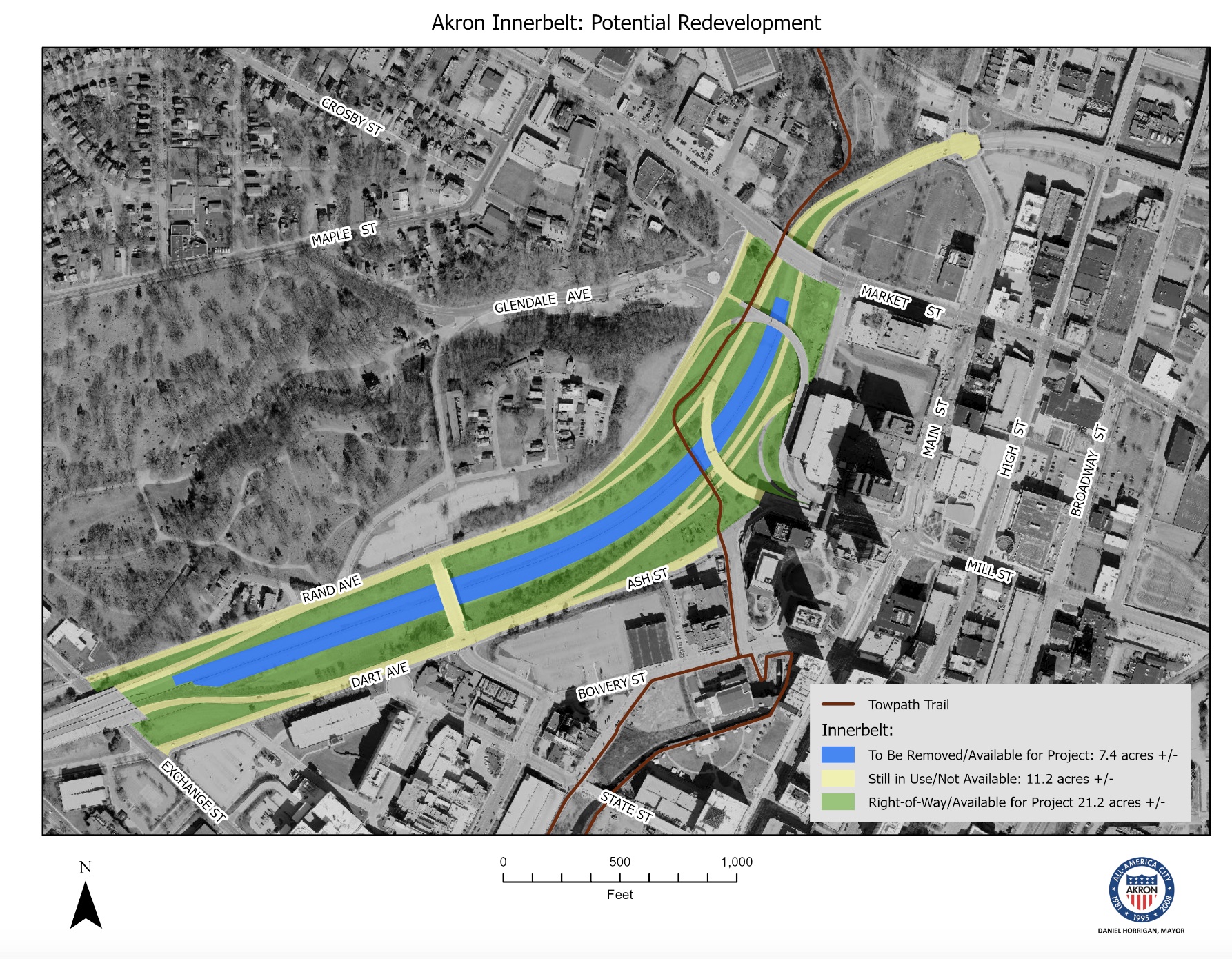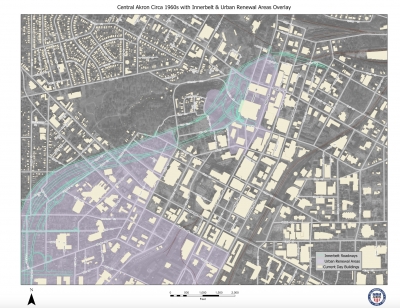The City of Akron today released its report on the background and possible future uses of the 30 acre site near downtown that now stands empty after what once was the Akron Innerbelt has been town down.
Akron Mayor Dan Horrigan released this statement today:
“As Mayor of Akron, I want to acknowledge the lasting harm that the Innerbelt project caused to generations of Akronites,” said Mayor Dan Horrigan. “It destroyed the possibility of passing on generational wealth for some and it left emotional scars on many others who still carry the weight of that burden to this day.
On behalf of the City of Akron, we apologize for the city's past implementation of policies and practices from multiple levels of state and federal agencies which have caused this lasting harm to our community. My administration has been committed to reckoning with the mistakes of the past as we look to a new and reconnected future, and I thank all those who have both led the engagement effort and those who have shared their stories. We can’t move forward without a solid grasp of the past, and our vow is to do things differently than they were done before. We’re working hand in hand with those who were displaced and the local community to envision what’s next for the Innerbelt.”
The Innerbelt, which was built back in the 1970's as part of a nationwide push for "Urban renewal", became one of many such projects which razed predominantly black neighborhoods to make way for highways.
In 2016, the Ohio Department of Transportation vacated a portion of the highway between Market and Exchange Streets and returned it to the city for public use. The area consists of 30-acres adjacent to downtown Akron.

Some of the recommendations in the Executive Summary, which you can read in full by clicking here, include in the short term, developing an interim use strategy, and keeping the site safe and open without being exclusionary.
Some longer term recommendations include converting some city-owned land into a Community Land Trust, exploring the creation of a Community Restoration Fund, and exploring strategies that restore the street grid.
The report also notes:
A number of cities and communities around the country are starting to wrestle with the future of urban renewal infrastructure sites like the Innerbelt. The way that the process here in Akron has sought to hold space for the history and legacy of the Innerbelt and is seeking to frame future visions in the context of healing and equity can help it be a national model. And what continues to be done here has the potential to be a vibrant symbol locally for what it means to reckon with the past - both the joys and the sorrows- and work towards a future in which all Akronites can thrive. This is just a start, but animportant foundation to build upon.

